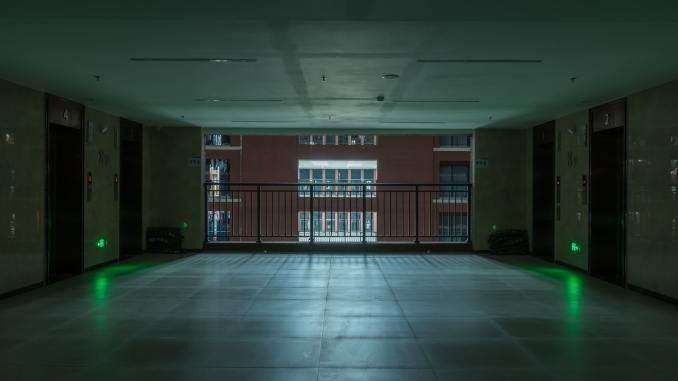
The liminal space aesthetic was drilled into my mind before I knew what to call it. It has been trending on social media for the past few years, highlighting the eerie and nostalgic theme of abandoned spaces. Usually, these posts consist of empty hallways, waiting rooms, or places of business that are unsettling because they’re supposed to be bustling with people. The absence of such a crowd is what makes the images appear spooky to some.
The rooms it portrays look as if they’re from another time, either abandoned in the distant past or an apocalyptic future. Characterized by winding stairs, mazes of doors, and darkened corners, liminal space can cause people to feel claustrophobic or lost. This is because most of the images don’t portray a clear way out of the room, or they suggest that a boogeyman could pop out at any moment. It’s as if the stairs lead to nowhere, and the doors are a dead end.
Liminal space doesn’t always have to look creepy at first glance. It could be a picture of a house with a white picket fence and paved sidewalks. But the simplicity of the image can cause the viewer to think that there’s something off about it. It looks a little too perfect.
These photos give off a sense of dreamlike deja vu, piquing the mind’s eye and asking the harrowing question, “Have I been here before?” Most of the time, people have visited places like those of liminal space — like a pool or arcade — but the only difference with the image is that there’s nobody there.
It’s hard to pinpoint exactly where these photos are taken — it’s like from a parallel universe or an alternate reality. Some contain aspects of retro Americana, but they feel foreign, yet strikingly similar to the world here. Think back to movie sets of the ’50s and ’60s; they were symbolic for their bright colors, yet are full of liminal spaces and unique vintage architecture. This can provide a sense of comfort to some, but an eerie tone to others.
These photos can bring people back to recount old memories, either nostalgic or unsettling. But they also provide ephemerality, the concept that nothing lasts forever. Some people seek out liminal spaces to photograph, while others create them with design software. But regardless of what’s real and what’s digitally altered, liminal space almost always sparks a fascination in the idea of differentiating past, present and future, and that the places our minds take us might actually exist. You just have to look first, but always double-check over your shoulder — anything could be out there, lurking behind the next door.


